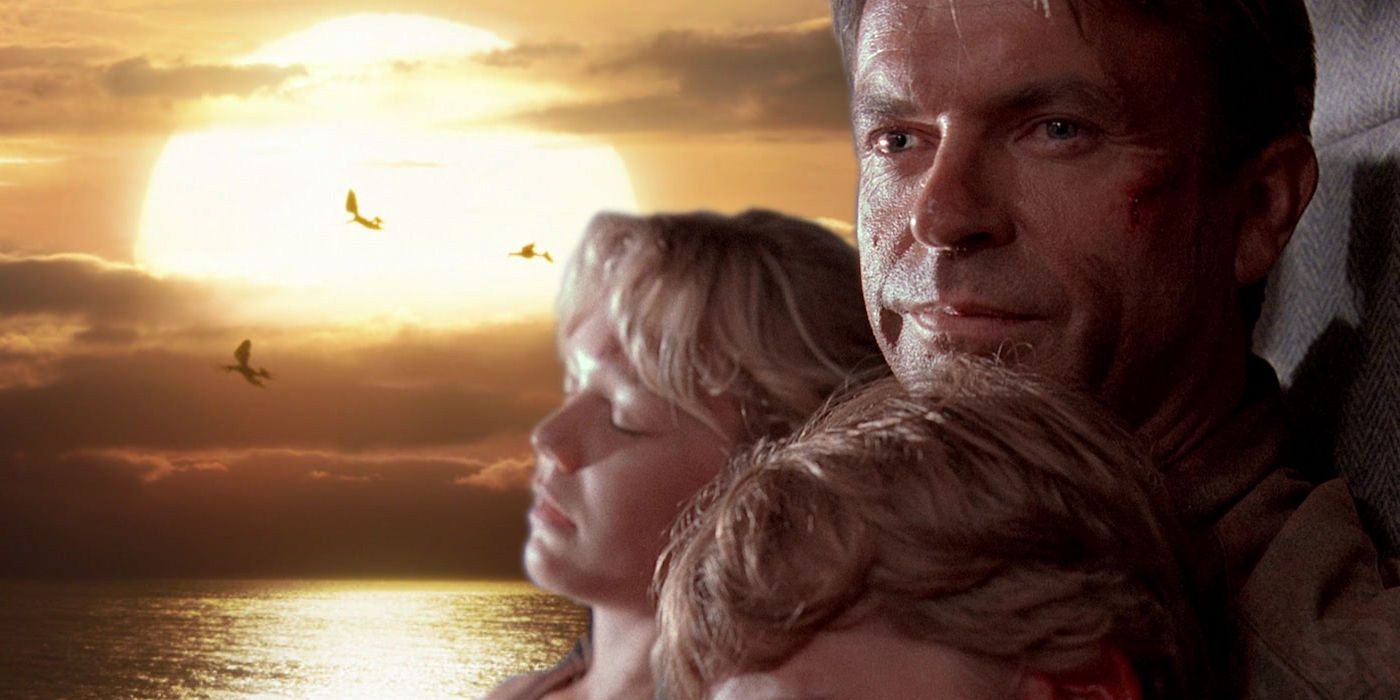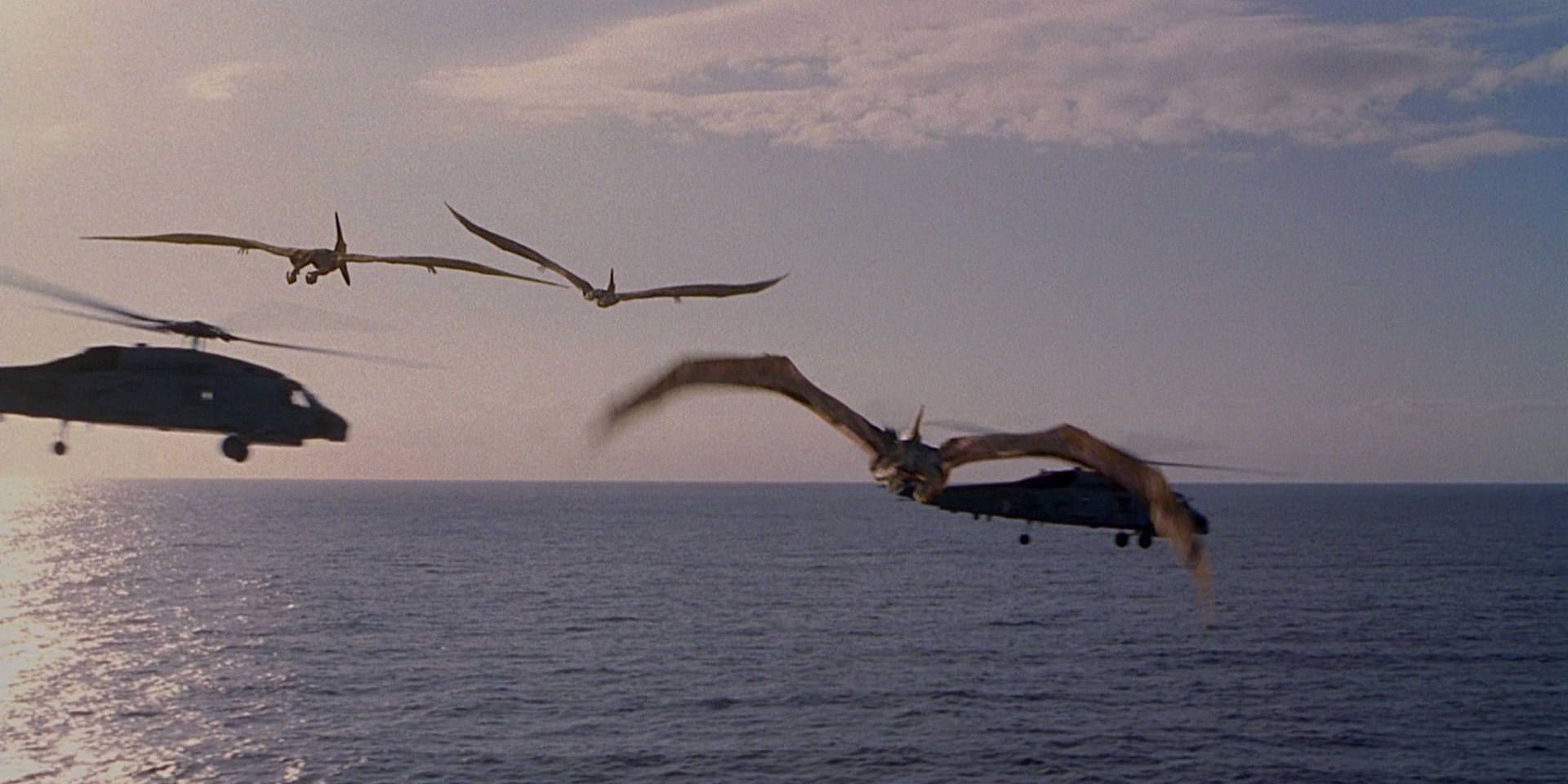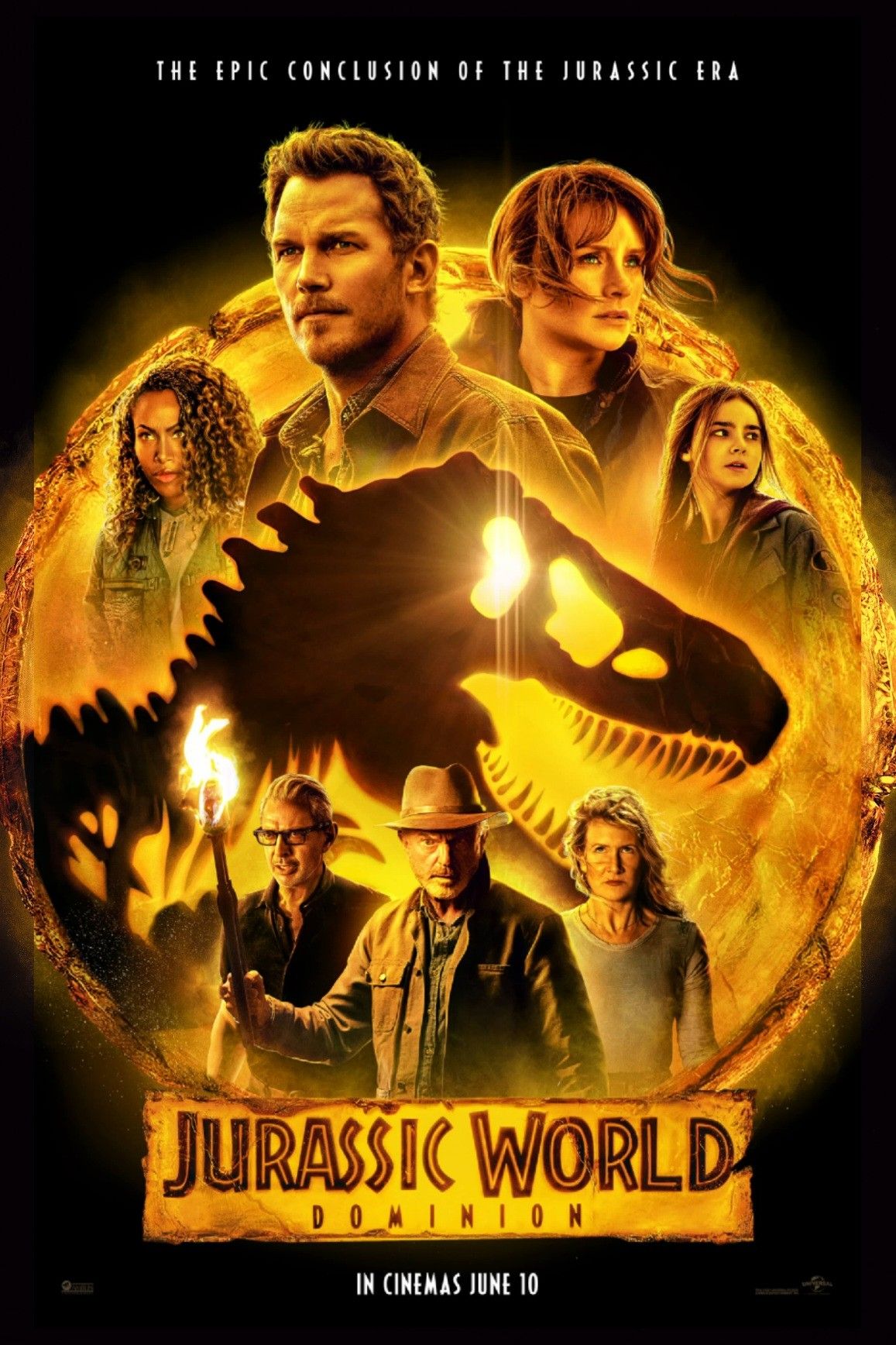Almost all of the Jurassic Park movies, except for Jurassic World, end the same way, with audiences seeing some form of bird or pterosaur flying right before the credits roll. On the one hand, Jurassic Park is considered an action and thriller franchise filled with dinosaurs, but on the other hand, it's also a series with great symbolism and ethical questions behind its story and the actions the characters take. This is evident in Ian Malcolm's monologue in the original film, in which he talks about Ingen being blinded by greed and ignorant to the implications of what they're doing.
Unfortunately for the people in each film, they experience those terrifying implications up close when the dinosaurs get loose on the islands, particularly in Jurassic Park and Jurassic World. The events in both films highlight the hubris of those in charge at Ingen and Masrani Global, thinking they have full control of the creatures they brought back to life after tens of millions of years. But despite everything that happens and everyone that dies, almost each Jurassic Park movie tries to end on an exciting and hopeful note, a tradition that began with the first film.
In Jurassic Park, Alan Grant looks out of the helicopter's window to see pelicans flying next to them, which puts a smile on his face. Then in the sequel, The Lost World: Jurassic Park, pterosaurs can be seen landing on a tree branch on Isla Sorna, and they return in Jurassic Park 3's ending when they can be seen flying next to Grant's helicopter, again. Finally, Jurassic World: Fallen Kingdom ends with more pterosaurs flying parallel to Owen Grady and Claire Dearing's car, highlighting the fact that the dinosaurs are now loose in the world. The only film not to share a similar ending is Jurassic World, which instead chooses to wrap on the T-rex roaring over the fallen park.
Part of the meaning behind these endings is evolution. Dinosaurs are known to have been wiped out millions of years ago, but the fact remains that some dinosaur species still exist today - and paleontologists agree that birds are one of them. So seeing the pelicans at the end of the first Jurassic Park movie is meant to emphasize that point, that despite dinosaurs like velociraptors being brought back to life, dinosaurs aren't as extinct as humans think them to be. Interestingly, though, other than Jurassic Park, the other ends use the old pterosaurs for its endings rather than modern birds - but the same idea still applies.
Having said that, there's a double-meaning to the endings for The Lost World, Jurassic Park 3, and Fallen Kingdom, given those films use pterosaurs; freedom. The Lost World and Jurassic Park 3 both take place on Isla Sorna, an island where the dinosaurs have lived in freedom without much interference from the outside world. Fallen Kingdom, meanwhile, uses the pterosaurs to finalize its story of dinosaurs being freed into the world, thus bringing about an actual Jurassic world. In those three instances, it's the "old" dinosaurs gaining freedom that birds already have.
Knowing that most of the Jurassic Park movies end in a similar fashion, it's strange that 2015's Jurassic World took a different route, but there's a reason for that. A whopping 14 years passed between Jurassic Park 3 and Jurassic World's releases, and so, Colin Trevorrow and the rest of the creative team aimed to bank heavily on nostalgia for that film. While the T-rex wasn't the main star anymore, the dinosaur is still what people associate the most with the franchise. So ending on the T-rex felt like a natural connection between the original film and the new one, especially since both took place on Isla Nublar.



